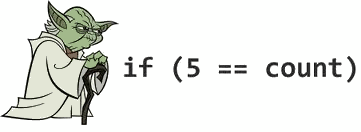or “Type Erasure is not your friend”
The solution I outlined in my previous has one big drawback (well, two, actually): it does not work.
The trouble is that the approach I suggested of having a common generic function to invoke the request with a GenericType resulted in the nested type being erased at run time. The code compiled, and a List was returned when the response was deserialised, but Jersey constructs a List of HashMap, rather than a list of the declared desired type.
This is extremely puzzling, as I expected that this would collapse at run time with type errors, but it didn’t. My initial thought when this rose up and bit me – and consumed a lot of time that I could ill afford – was that there was a difference in behaviour between deployed run time and running with the Jersey test framework. I was wrong – when I modified my test to examine the content of the returned List, it showed up as a fault immediately.
A diversion: this shows how very easy it is to stuff up a unit test. My initial test looked something like:
List<Thing> result = client.fetchList();
assertNotNull("should not be null", result);
assertFalse("should not be empty", result.isEmpty());
which seems pretty reasonable, right? We got a List back, and it had stuff in it, all as expected. I did not bother to examine the deserialised objects, because I was doing that on a different method that simply returned a Thing rather than a List– that’s sufficient, right? We know that deserialisation of the JSON body is working, right?
Extending the test to something that you would not automatically think to test showed up with a failure immediately:
List<Thing> result = client.fetchList();
assertNotNull("should not be null", result);
assertFalse("should not be empty", result.isEmpty());
assertTrue("Should be a Thing", TypeUtils.isInstance(result.get(0), Thing.class));
The List did not actually contain Thing instances.
A quick solution was obvious, although resulted in duplicating some boilerplate code for handling errors – drop the common generic method, and modify the calling methods to invoke the Jersey get() using a GenericType constructed with a specific List declaration.
This did highlight an annoying inconsistency in the Jersey client design though. For the simple cases of methods like
Thing getThing() throws BusinessException;
then the plain Jersey get() which returns a Response can be used. Make a call, look at the Response status, and either deserialise the body as a Thing if there’s no error, or as our declared exception type on error and throw the exception. Simple, clean and pretty intuitive.
In the case of the get(GenericType) form of the calls though, you get back the declared type, not a Response. Instead you need to trap for a bunch of particular exceptions that can come out of Jersey – particularly ResponseProcessingException – and then obtain the raw Response from the exception. It works, but it’s definitely clunkier than I would prefer:
public final List<Thing> getThings() throws BusinessException {
try {
List<Thing> result = baseTarget.path(PATH_OF_RESOURCE)
.request(MediaType.APPLICATION_JSON)
.get(new GenericType<List<Thing>>() {});
return result;
} catch (ResponseProcessingException rep) {
parseException(rpe.getResponse());
} catch (WebApplicationException | ProcessingException pe) {
throw new BusinessException("Bad request", pe);
}
}
Note that we get either WebApplicationException or ProcessingException if there is a problem client-side, and so we don’t have a response to deserialise back to our BusinessException, whereas we get a ResponseProcessingException whenever the server returns a non-200 (or to be precise anything outside the 200-299 range) status.
Of course, all of this is slightly skewed by our use-case. Realistically most RESTful services have a pretty small set of end-points, so the amount of boiler plate repeated code in the client is limited. In our case we have a single data abstraction service sitting between the database(s) and the business code, and necessarily that has a very broad interface, resulting in a client with lots of methods. It ain’t pretty but it works, and currently there’s a reasonable balance between elegant code and readable code with repeated boiler-plate bits.

